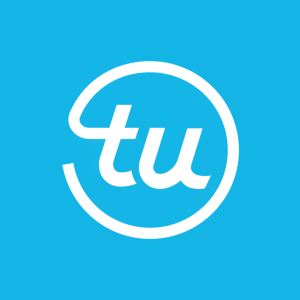Fraud Costs Businesses Nearly 8% of Their Equivalent Revenues Globally, TransUnion Reports
Rhea-AI Summary
TransUnion (NYSE: TRU) reports global businesses lost an average of 7.7% of revenue to fraud in the past year (~$534B across surveyed leaders), while U.S. firms reported 9.8% lost—a 46% increase vs. 2024 and ~27% above the global average.
The update cites account takeover growth (volume +21% H1 2024→H1 2025; +141% since H1 2021), synthetic identity, and scam/authorized fraud as top loss drivers, and finds 77% of U.S. breaches in H1 2025 exposed full Social Security numbers.
Positive
- Global fraud loss estimated at $534 billion
- U.S. firms reported 9.8% revenue loss to fraud
- Account takeover volume rose 21% H1 2024→H1 2025
- Account takeover volume up 141% since H1 2021
Negative
- U.S. fraud loss rate 46% higher than in 2024
- U.S. fraud rate 27% above global average
- 77% of U.S. breaches in H1 2025 exposed full SSNs
- Account takeover responsible for 31% of U.S. fraud losses
News Market Reaction 1 Alert
On the day this news was published, TRU gained 3.80%, reflecting a moderate positive market reaction. This price movement added approximately $563M to the company's valuation, bringing the market cap to $15.39B at that time.
Data tracked by StockTitan Argus on the day of publication.
New data reveals U.S. companies lost an average of
CHICAGO, Oct. 08, 2025 (GLOBE NEWSWIRE) -- Fraud is draining business resources at an alarming and unprecedented rate. According to TransUnion’s (NYSE: TRU) newly released H2 2025 Update to the Top Fraud Trends Report, companies worldwide lost
In the U.S., business leaders reported their companies lost (on average) the equivalent of
“Fraudsters are exploiting every digital touchpoint, from account creation to login and transaction,” said Steve Yin, global head of fraud at TransUnion. “The financial impact is staggering, and organizations must rethink how they verify identity and secure customer interactions. To stay ahead of increasingly sophisticated threats, businesses must embrace innovative thinking and deploy adaptive strategies that disrupt fraud at every stage of the consumer lifecycle.”
The report, which draws on proprietary data from TransUnion’s global intelligence network and surveys of business leaders in six countries and consumers across 18 countries, reveals that as monetary losses grow in scale, fraud is growing in sophistication and diversity. When the global business leaders were asked which fraud was the predominant cause of business loss in the past year, scam/authorized fraud (
Scams/Authorized Fraud Was the Top Reported Cause of Fraud Losses for Global Businesses, Followed Closely by Synthetic Identity Fraud and Account Takeover
| Fraud Type | Percentage of Total (Global) | Percentage of Total (U.S.) |
| Scam/Authorized fraud —Dishonest scheme intended to trick a person into giving up something of value (e.g., account access, money, information) | ||
| Synthetic identity fraud —Use of a combination of personally identifiable information to fabricate a person or entity to commit a dishonest act for financial or personal gain | ||
| Account takeover —Unauthorized individuals taking over someone’s online account (e.g., bank, social media, email) without their permission | ||
| Application fraud (first-party) — Identity misrepresentation or falsifying information for the purpose of financial gain | ||
| Application fraud (third-party) — Use of stolen identity to open an account | ||
| Other |
Source: TransUnion business survey
In the U.S., account takeover fraud has emerged as the most damaging fraud type for businesses, responsible for nearly one-third (
While account takeover trails scam/authorized fraud globally, its growth trajectory is concerning. According to data from TransUnion’s customers in its global intelligence network, digital account takeover volume worldwide grew
"As account takeover fraud surges, businesses can no longer afford solely reactive defenses,” said Yin. “The growing sophistication of fraudsters demands a proactive investment in layered security and identity intelligence. In today’s threat landscape, protecting customer accounts is not just a priority—it’s a business imperative."
Consumer Reported Exposure to Digital Fraud Grows Amid Gaps in Awareness and Prevention
Globally, consumers continue to face a wide range of scams, with tactics often tailored to regional behaviors and vulnerabilities. TransUnion’s survey across 18 countries found that
U.S. consumers are being increasingly targeted by sophisticated fraud schemes that exploit digital vulnerabilities. Over half (
Alarmingly,
India, South Africa and Guatemala Saw the Greatest Percentage of Respondents Indicating They Fell Victim to Fraud in H1 2025
| Country | Targeted and fell victim | Targeted but didn’t fall victim | Not targeted | Most reported fraud scheme |
| Botswana | Money/gift card | |||
| Brazil | Vishing | |||
| Canada | Phishing & vishing (tie) | |||
| Chile | Vishing | |||
| Colombia | Smishing & vishing (tie) | |||
| Dominican Republic | Money/gift card & third-party seller scams on legitimate sites (tie) | |||
| Guatemala | Money/gift card & third-party seller scams on legitimate sites (tie) | |||
| Hong Kong | Vishing | |||
| India | Money/gift card | |||
| Kenya | Vishing | |||
| Namibia | Money/gift card | |||
| Philippines | Phishing | |||
| Rwanda | Money/gift card | |||
| South Africa | Money/gift card | |||
| Spain | Smishing | |||
| United Kingdom | Phishing | |||
| United States | Phishing & smishing (tie) | |||
| Zambia | Money/gift card |
Source: TransUnion consumer survey
“As scammers continue to evolve their tactics to enrich themselves, it’s more important than ever for consumers to regularly review their credit reports to ensure all listed information is accurate,” said Margaret Poe, head of consumer credit education at TransUnion. “Those who suspect they’ve been targeted or victimized by fraud should not only check their credit reports but also consider placing a freeze on their credit files with each of the major credit bureaus.”
TransUnion came to its conclusions about digital fraud and data breaches based on intelligence from its array of TransUnion fraud prevention solutions. To learn more about how TransUnion fraud prevention solutions can help businesses avoid fraud and prevent fraud losses, click here.
Specific country and regional data in the report includes the United States, Botswana, Brazil, Canada, Chile, Colombia, Costa Rica, the Dominican Republic, El Salvador, Guatemala, Honduras, Hong Kong, India, Kenya, Mexico, Namibia, Nicaragua, the Philippines, Puerto Rico, Rwanda, South Africa, Spain, the United Kingdom and Zambia. Download the TransUnion H2 2025 Update to the Top Fraud Trends Report for more information and insights about the global fraud trends.
About TransUnion (NYSE: TRU)
TransUnion is a global information and insights company with over 13,000 associates operating in more than 30 countries. We make trust possible by ensuring each person is reliably represented in the marketplace. We do this with a Tru™ picture of each person: an actionable view of consumers, stewarded with care. Through our acquisitions and technology investments we have developed innovative solutions that extend beyond our strong foundation in core credit into areas such as marketing, fraud, risk and advanced analytics. As a result, consumers and businesses can transact with confidence and achieve great things. We call this Information for Good® — and it leads to economic opportunity, great experiences and personal empowerment for millions of people around the world.
http://www.transunion.com/business
| Contact | Dave Blumberg |
| TransUnion | |
| david.blumberg@transunion.com | |
| Telephone | 312-972-6646 |








